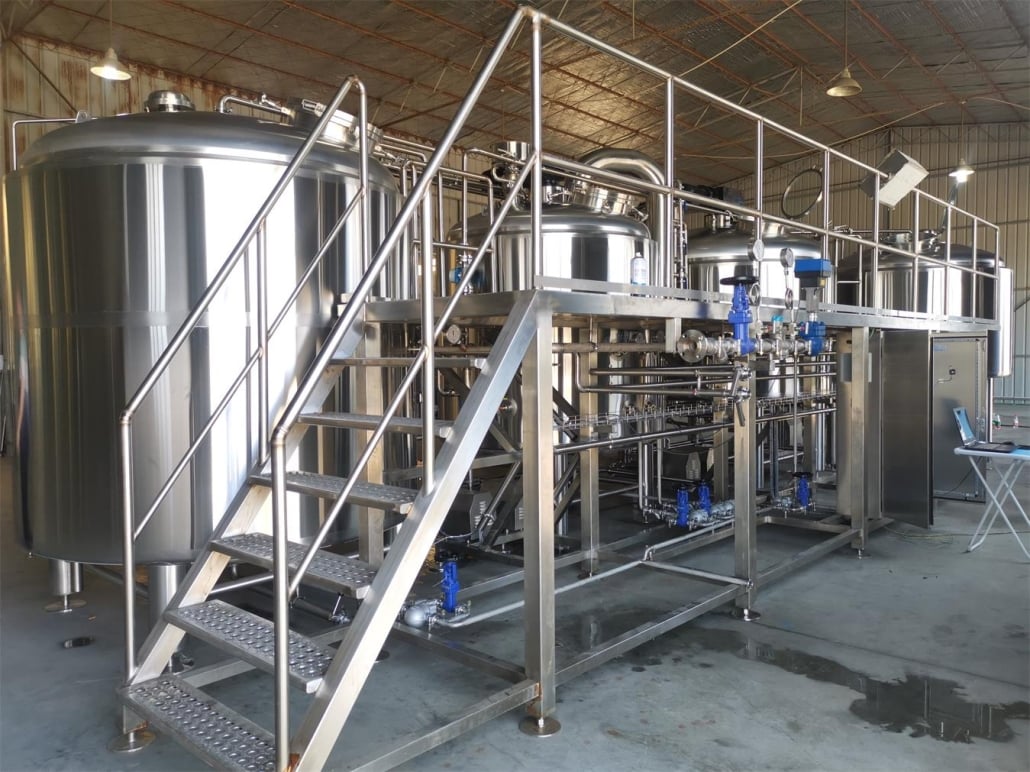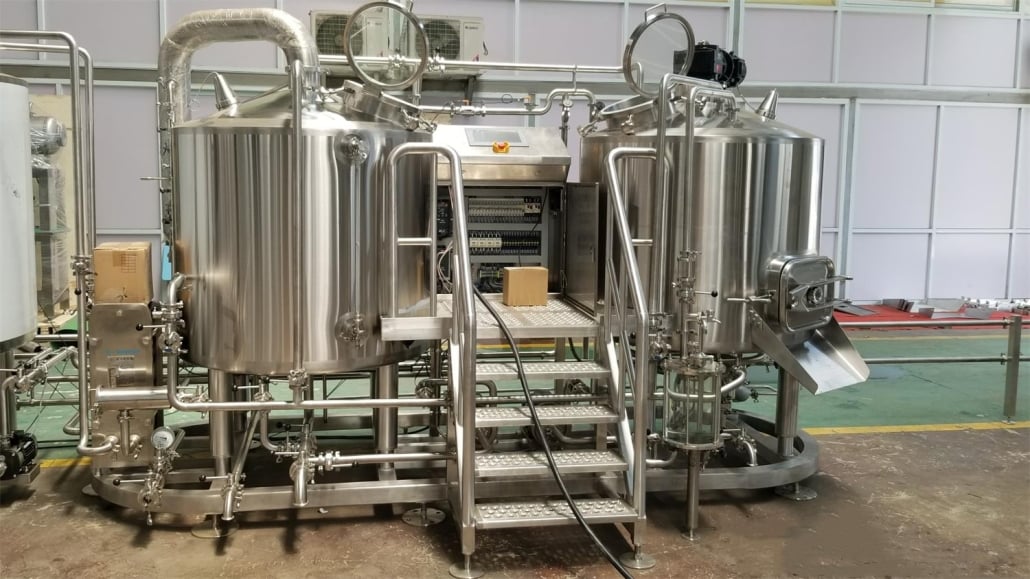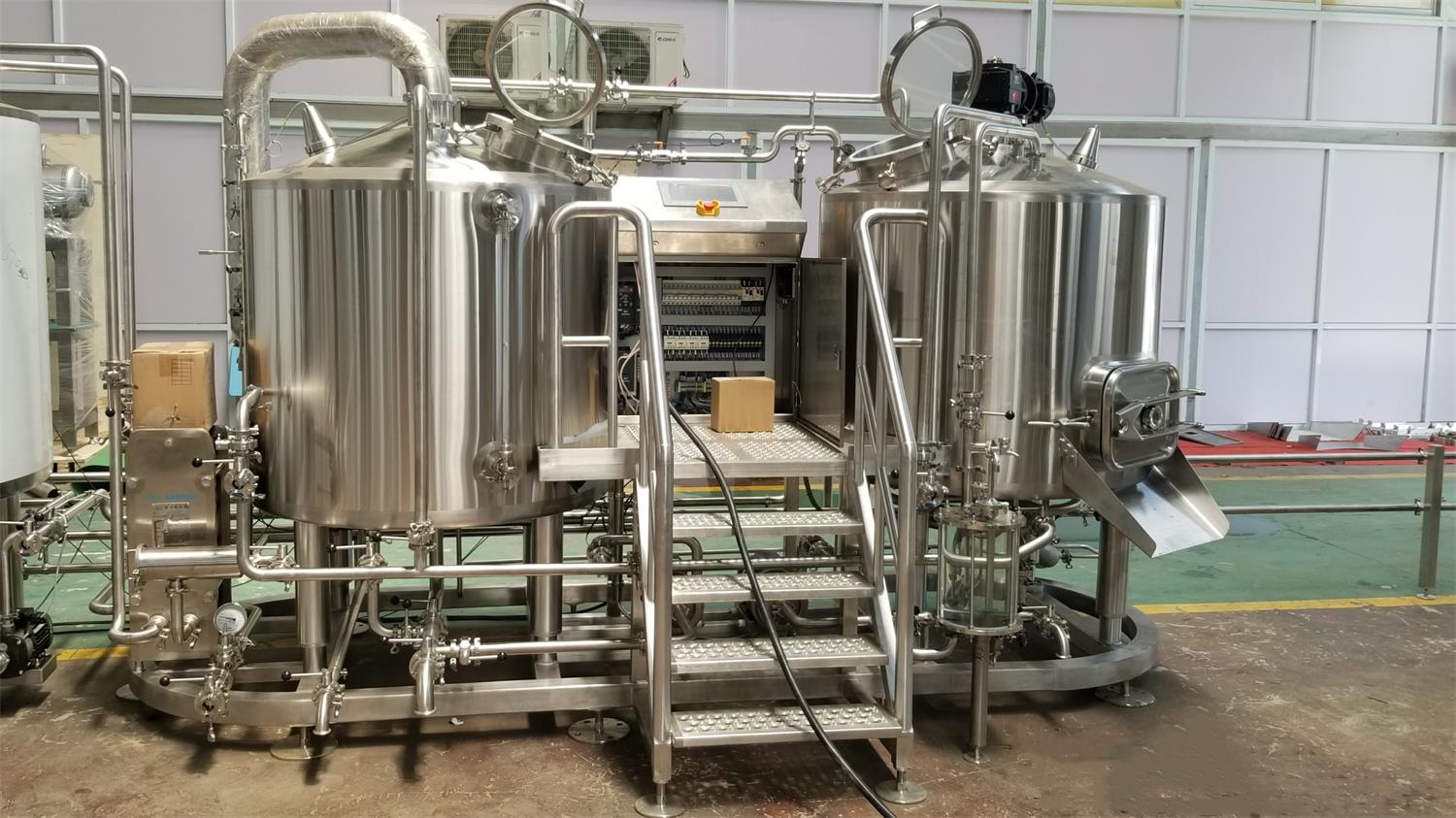Craft Brewing Equipment
Welcome to the world of craft brewing, where passion meets precision. Craft brewing has surged in popularity, with enthusiasts and entrepreneurs alike diving into the art and science of beer making. But what exactly goes into this process? Today, we’ll delve deep into craft brewing equipment, exploring everything from the basics to the nuances that make each brewing journey unique. Whether you’re a seasoned brewer or just starting, this guide will help you navigate the vast landscape of craft brewing equipment.
Overview of Craft Brewing Equipment
Craft brewing is an intricate dance of creativity and science. At its heart lies the equipment, each piece playing a vital role in transforming raw ingredients into the beloved beverage. Understanding the essentials and advanced options available can significantly enhance your brewing experience.
Craft brewing equipment ranges from simple home setups to sophisticated commercial systems. Key elements include fermenters, kettles, mash tuns, and various tools for measuring and controlling the brewing environment. The choice of equipment impacts not only the brewing process but also the quality and style of the final product.

Essential Craft Brewing Equipment Guide
Before we get into the details, let’s outline the essential pieces of equipment every craft brewer needs. Whether you are brewing at home or on a commercial scale, these tools form the backbone of your brewing operations.
Fermenters
Fermenters are where the magic happens. This is where yeast transforms wort into beer. They come in various shapes and sizes, from simple plastic buckets to sophisticated conical stainless-steel tanks. Key features to consider include volume capacity, material, and ease of cleaning.
Kettles
The kettle is crucial for boiling the wort, a step necessary to sterilize the liquid and extract flavors from hops. Kettles vary in size and material, with options including stainless steel and aluminum. Some kettles come with built-in thermometers and spigots for easier transfer of the wort.
Mash Tuns
A mash tun is where malted grains are mixed with water and heated to convert starches into fermentable sugars. Mash tuns can be simple insulated coolers or more complex systems with built-in heating elements and precise temperature controls.
Heat Exchangers
Heat exchangers quickly cool down the wort after boiling, preparing it for fermentation. Plate heat exchangers are popular for their efficiency and compact design. It’s important to choose a heat exchanger that suits your batch size to ensure effective cooling.
Pumps and Tubing
Pumps and tubing facilitate the movement of liquids between different stages of the brewing process. Food-grade materials are essential to ensure the purity and safety of the beer. Pumps should be robust and easy to clean.
Control Systems
For larger or more advanced setups, control systems help automate and monitor various brewing parameters, such as temperature and flow rates. These can range from simple thermostats to sophisticated digital controllers.
Measurement Tools
Accurate measurement is critical in brewing. Tools like hydrometers, thermometers, pH meters, and refractometers help ensure that each batch meets your desired specifications.
Cleaning and Sanitizing Equipment
Cleanliness is next to godliness in brewing. Proper cleaning and sanitizing equipment, including brushes, cleaning solutions, and sanitizers, are vital to prevent contamination and ensure the quality of your beer.
Types of Craft Brewing Equipment
Craft brewing equipment varies widely in terms of complexity, capacity, and intended use. Here’s a detailed look at the different types of equipment you might consider.
| Equipment Type | Description |
|---|---|
| Fermenters | Available in plastic, glass, and stainless steel, with options for different capacities and features like temperature control and conical bottoms for easy yeast collection. |
| Kettles | Stainless steel or aluminum, ranging from basic pots to advanced systems with built-in heating elements and temperature controls. |
| Mash Tuns | Insulated coolers, stainless steel pots, or complex systems with automated temperature control. |
| Heat Exchangers | Plate or counterflow designs, essential for rapidly cooling wort to fermentation temperatures. |
| Pumps | Essential for moving liquids, with options for different flow rates and materials suitable for food and beverage use. |
| Control Systems | From basic thermostats to advanced digital controllers, essential for maintaining precise brewing conditions. |
| Measurement Tools | Hydrometers, refractometers, pH meters, and thermometers for accurate monitoring of brewing parameters. |
| Cleaning Equipment | Brushes, cleaning solutions, and sanitizers necessary for maintaining equipment hygiene. |
The Brewing Process Explained
Craft brewing involves several stages, each requiring specific equipment and techniques. Here’s a breakdown of the brewing process and the essential equipment at each stage.
Milling
The first step is milling, where malted barley is crushed to expose the starches. This is typically done with a grain mill, which can be manually operated or motorized.
Mashing
In the mashing stage, the crushed grains are mixed with hot water in a mash tun to convert starches into fermentable sugars. The temperature and duration of the mash are crucial for determining the final beer’s characteristics.
Lautering
After mashing, the mixture is transferred to a lauter tun, where the solid grains are separated from the liquid wort. The wort is then rinsed with hot water to extract as much fermentable sugar as possible.
Boiling
The wort is then boiled in a kettle, during which hops are added. Boiling sterilizes the wort and extracts flavors and bitterness from the hops. The duration of the boil and the timing of hop additions significantly influence the final product.
Cooling
After boiling, the wort needs to be rapidly cooled to fermentation temperature. This is done using a heat exchanger, which can be a plate or counterflow design.
Fermentation
The cooled wort is transferred to a fermenter, where yeast is added. Fermentation typically lasts from a few days to several weeks, depending on the beer style and desired characteristics.
Conditioning
After fermentation, the beer may be conditioned to develop its flavors and carbonation. This can be done in the same fermenter or transferred to a secondary vessel.
Packaging
Finally, the beer is packaged for consumption. This can be in bottles, cans, or kegs. Each packaging method requires specific equipment, such as bottling lines or canning machines.
Craft Brewing Equipment Specifications
When selecting craft brewing equipment, it’s essential to consider capacity, space requirements, design, and customization options. Here’s a table summarizing these key parameters.
| Parameter | Details |
|---|---|
| Capacity | Ranges from small homebrew setups (5-20 gallons) to large commercial systems (10 barrels or more). |
| Space Requirements | Home setups can fit in a small space like a garage or basement, while commercial systems require dedicated brewing facilities. |
| Design | Options include modular systems that can be expanded over time, and turnkey solutions that come pre-assembled. |
| Customization | Many suppliers offer customization options, including specific dimensions, additional features, and branding. |
Craft Brewing Equipment Suppliers and Price Range
Choosing the right supplier for your brewing equipment is crucial for quality and support. Here’s an overview of some popular suppliers and the price ranges for their equipment.
| Supplier | Equipment Offered | Price Range |
|---|---|---|
| SS Brewtech | Fermenters, kettles, mash tuns, and accessories | $500 – $10,000+ |
| Blichmann Engineering | High-end homebrew and small commercial brewing equipment, including conical fermenters and electric kettles | $300 – $20,000+ |
| MoreBeer! | Wide range of homebrew equipment, from beginner kits to advanced systems | $100 – $15,000+ |
| Spike Brewing | Customizable brewing systems and accessories | $1,000 – $25,000+ |
| Brewmation | Automated brewing systems for commercial use | $10,000 – $100,000+ |
| Stout Tanks and Kettles | Commercial-grade stainless steel brewing equipment | $1,000 – $50,000+ |
Installation, Operation, and Maintenance
Installing and maintaining your brewing equipment properly ensures longevity and efficiency. Here’s a detailed look at these aspects.
| Aspect | Details |
|---|---|
| Installation | Professional installation is recommended for large systems to ensure proper setup. Homebrewers can often install their equipment with basic tools and guidelines. |
| Operation | Following manufacturer instructions is crucial for safe and efficient operation. Regular monitoring and calibration of control systems help maintain brewing conditions. |
| Maintenance | Routine cleaning and sanitizing prevent contamination. Regular inspection for wear and tear, and timely replacement of parts, ensure consistent performance. |
Choosing the Right Supplier for Craft Brewing Equipment
Selecting a supplier involves several considerations, from product quality to customer service. Here’s how to choose the best supplier for your needs.
| Criteria | Considerations |
|---|---|
| Product Quality | Look for suppliers with a reputation for high-quality materials and craftsmanship. |
| Customer Support | Good customer support is essential for troubleshooting and assistance. Evaluate suppliers based on reviews and direct interactions. |
| Customization Options | If you have specific requirements, choose suppliers that offer customization. |
| Price and Value | Compare prices and what you get for your money. Sometimes paying more upfront saves money in the long run due to durability and efficiency. |
| Delivery and Installation | Check if the supplier offers delivery and professional installation services, especially for larger systems. |
Comparing Pros and Cons of Craft Brewing Equipment Options
Different brewing equipment options come with their own set of advantages and limitations. Here’s a comparison to help you make an informed decision.
| Equipment Type | Pros | Cons |
|---|---|---|
| Stainless Steel | Durable, easy to clean, and maintains temperature well. | Higher initial cost. |
| Plastic | Affordable, lightweight, and easy to handle. | Less durable and can retain odors. |
| Electric Systems | Precise temperature control and automation options. | Requires a reliable power source and can be more expensive. |
| Gas Systems | Can reach higher temperatures and often more affordable for large systems. | Requires ventilation and can be less precise in temperature control. |
| Automated Systems | Reduce manual labor and increase consistency. | Higher cost and can be complex to troubleshoot. |
| Manual Systems | Lower cost and offer more hands-on control for the brewer. | More labor-intensive and can be less consistent. |

FAQs
Here are some frequently asked questions about craft brewing equipment, formatted in a table for easy reference.
| Question | Answer |
|---|---|
| What is the best material for brewing equipment? | Stainless steel is highly recommended for its durability, ease of cleaning, and ability to maintain temperature. |
| How much does it cost to start homebrewing? | Basic homebrewing kits start around $100, but more advanced setups can cost several thousand dollars. |
| Do I need a dedicated space for brewing? | While small setups can fit in a kitchen or garage, larger systems require a dedicated space to accommodate equipment and ensure proper ventilation and sanitation. |
| How important is temperature control in brewing? | Temperature control is crucial for fermentation and mashing stages to ensure proper yeast activity and starch conversion. |
| Can I upgrade my brewing system over time? | Yes, many brewers start with basic equipment and gradually upgrade as they gain experience and seek to improve their brewing process. |
| What is the lifespan of brewing equipment? | With proper care and maintenance, high-quality brewing equipment can last many years, even decades. |
Conclusion
Craft brewing is an exciting and rewarding hobby that can also become a profitable business. The right equipment is crucial to producing high-quality beer consistently. From selecting fermenters and kettles to understanding the brewing process and maintaining your gear, every step is vital to your success as a craft brewer.
Whether you’re just starting or looking to expand your brewing operations, this guide provides the foundational knowledge needed to navigate the world of craft brewing equipment. Embrace the journey, and may your brewing endeavors be as delightful and satisfying as the beer you create.
Share this entry
Interested in learning more about Brewing Systems including additional details and pricing information? Please use the form below to contact us!
YOLONG BREWERY EQUIPMENT FAQS
- Commercial Brewery / Craft Brewery / Microbrewery / Nanobrewery
- What is The Difference Between Craft Beer and Industrial Beer?
- The Bespoke Differences In Custom Brewing Systems
- Everything You Need to Know About Kettle Souring
- How to Choose Brewing Equipment for Your business?
- How To Choose The-Best Partner To Build Your Commercial Microbrewing System?
- Two Detection Sensors That You Need To Use In Your Brewhouse System
- Remote Control Applications in Brewing Equipment/How does it work?
- How To Clean Your Brand New Brewery Tanks?

